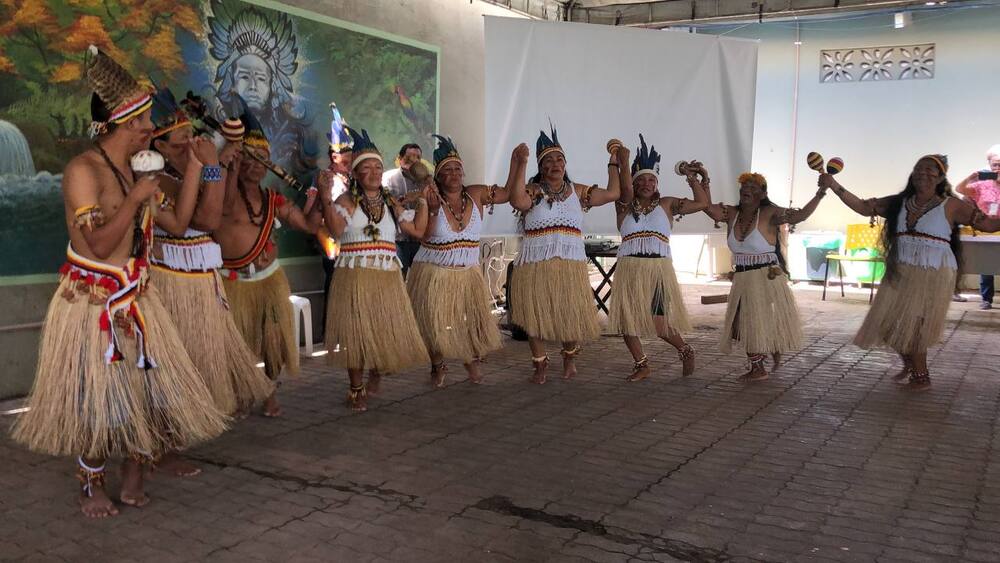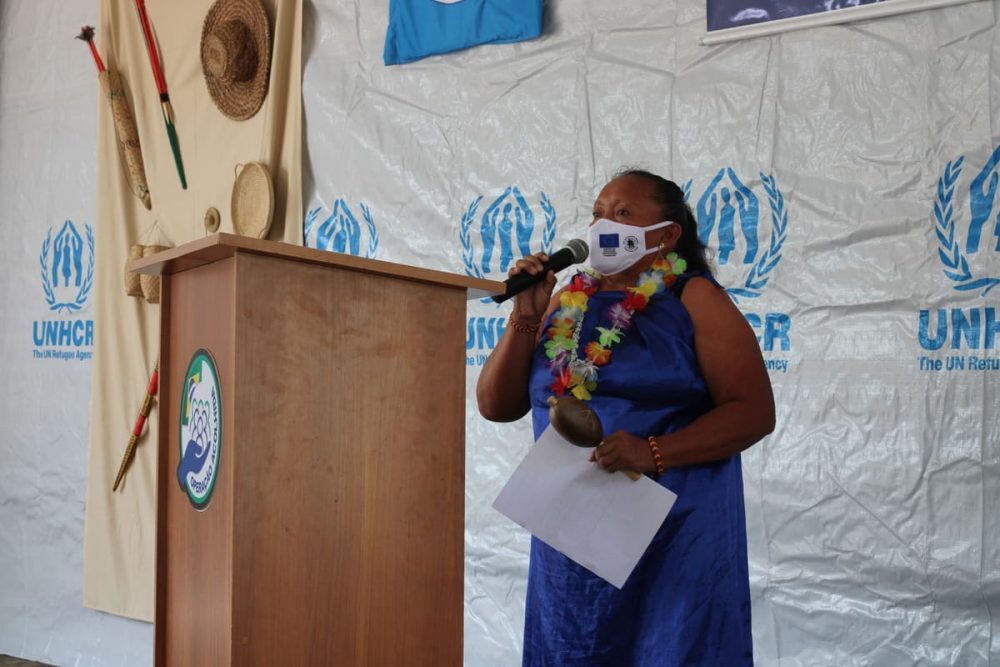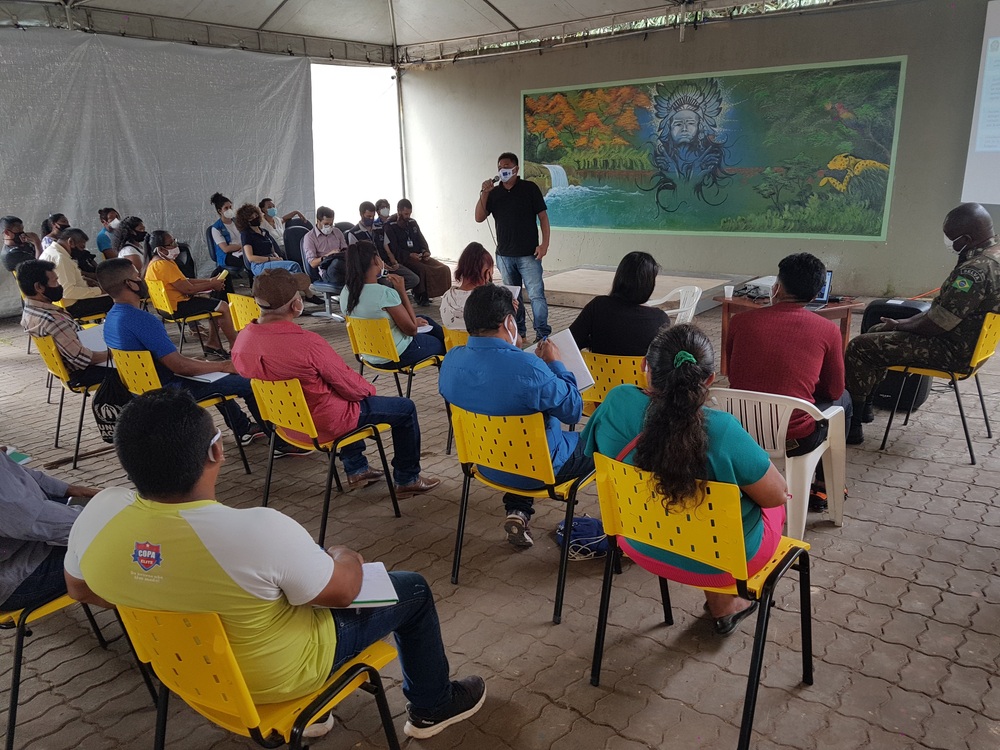In its various actions, the Fraternity – International Humanitarian Federation (FIHF) through the Indigenous Cultural and Training Centre (CCFI), located in Boa Vista – Roraima, promotes linguistic and cultural diversity among the different indigenous ethnic groups that are assisted in its projects and programs.

By preserving the mother languages, knowledge and traditional cultures are also preserved, in addition to raising awareness of people and nations towards tolerance, respect and preservation of the cultural and linguistic heritage of the various peoples of the world, especially indigenous peoples. For the United Nations Educational, Scientific and Cultural Organization (Unesco), the state of preservation of indigenous languages reflects the reality of these peoples: in many parts of the world they are on the verge of extinction.
According to Unesco, more than 500 languages are at risk of extinction in the world, 45 in Brazil alone. When a language dies, the knowledge and ability to understand the culture that expressed itself through it is also threatened because teachings, customs, oral traditions and other inherited knowledge are no longer transmitted between native speakers.
The indigenous Filipino and indigenous peoples rights activist Minnie Degawan warns that “for indigenous peoples, languages not only identify their origins or participation in a community, but also convey the ethical values of their ancestors – the systems of knowledge that bind them to the land and are crucial to their survival, as well as to the hopes and aspirations of youth.”
The humanitarian server Imer points out that the Fraternity – Humanitarian Federation (FIHF), since the beginning of the assistance to Venezuelan indigenous populations, migrants and refugees, inside and outside the shelters, has always sought to create conditions so that they could maintain their original dialects and languages.

Throughout all the years in which it has been working to serve these peoples, the Fraternity – Humanitarian Federation (FIHF) has created various resources and handouts, such as multilingual and informative booklets, to translate relevant information into the original language of the indigenous peoples that will involve participation, representation and decision-making of these peoples.
Imer also highlighted the hiring of translators for the Warao and E’ñepa languages and an anthropologist who encouraged the preservation of the original languages.
“When we preserve linguistic and cultural diversity, we are contributing to the enrichment and strengthening of societies and nations,” expresses Imer.
The many voices of the world
According to Unesco data, around 6,000 languages are currently spoken in the world; of these, at least 43% are at risk of disappearing. Globally, 40% of the population does not have access to education in the language they speak or understand, and less than 100 languages are used in the digital world.
As well as enabling greater integration, languages and multilingualism can promote the UN’s Sustainable Development Goals (SDGs) goal of “leaving no one behind.” The “SDGs” provide for the guarantee of an inclusive and quality education for all. Education and information in the mother language are considered essential for personal improvement, self-esteem and social development.
UNESCO argues that languages sustain multilingual and multicultural societies because they “transmit and preserve traditional knowledge and cultures in a sustainable way.”

Risks to the preservation of indigenous languages
Studies carried out by UN agencies point out that the greatest threat to the preservation of indigenous languages comes from climate change, which is causing serious impacts on subsistence economies. The so-called development projects such as dams, plantations, mining and extractive activities also take their toll, as do government policies that minimize diversity and encourage homogeneity.
What is often overlooked in debates about these concerns is the impact of these threats on indigenous cultures and values. Indigenous peoples derive their systems of identity, values and knowledge from interaction with their territories, be they forests or seas. Their languages are shaped by their environment – it is their attempts to describe their surroundings that form the basis of unique languages. Thus, when the territory changes, changes also occur in the culture and, eventually, in the language.
“One of the characteristics of indigenous languages is that they don’t have a literal translation of things. The words or phrases have a whole meaning, which is usually related to a certain situation, moment or even place,” reports Imer.

“In the E’ñepa culture, for example, children change their names as they age. Warao children do not have a name in their first years of life, they are only named afterward. They are very different worldviews. It is in this diversity that we grow and expand our knowledge and learn to respect and accept the particularity of the other,” completes the humanitarian server.
Multilingualism at CCFI
When walking through the CCFI spaces, one understands the richness and linguistic diversity of the indigenous peoples who frequent the place. There are several different dialects spoken by ethnic groups from Venezuela, Guyana and some regions of the Brazilian Amazon.

Imer explains that intercultural fairs are important moments for all this diversity to expand and reach the various visitors who attend them. They are affective places for exchanging knowledge that provide opportunities to learn more about the richness and depth of indigenous culture.
“During the fairs, through dancing, singing and storytelling, these peoples express their customs in their mother language and keep their culture and original language alive, transmitted orally over generations,” he concludes.






